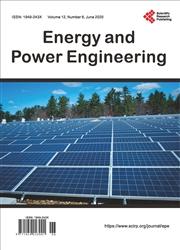Nuclear Power Renaissance Based on Engineered Micro-Nano-Nuclear Materials
引用次数: 0
Abstract
Nuclear Power today is in stagnation with a fleet of 440 operational units, due to many drawback factors, as economics, safety, controllability and response time, security and waste management, which all together act as a deterrent to new reactor construction. If the present trend is followed, together with aging of many nuclear plants, by 2040 there will remain less than half of the actual reactors in operation, representing an accelerated decay of the industry. The idea of renaissance of nuclear power is more frequent, but this is not possible without the use of novel materials, based on nano-engineered structures. It is well known that Damascus swords were not possible without the use of Damascus steel, and so the next nuclear technology is not possible without the use of novel micro-nano nuclear materials, which finally dictates the performances of the nuclear structures built with them. As a first approach to modern technology, since 1980s, five types of nuclear materials, able to bring a leap forward in nuclear technology have been identified and studied, which are: 1) Micro-hetero structures able to deal with fission products, that use fission reaction kinematics to self-separate fission products from the nuclear fuel, generically called “Cer-Liq-Mesh”, because simply it consists of a ceramic material stabilized on an elastic mesh or felt, immersed into a drain liquid. This improves the radiation damage, fuel burnup, fission products separation, and specific power density. 2) Nano-Beaded-Hetero-Structures that are using the nano-cluster specific mechanisms to accelerate separation of the transmutation products and place them into a drain liquid, which improves the separation of minor actinides, and radioisotopes production. 3) Nano-hetero structures for direct nuclear energy conversion into electricity, that are resembling a supercapacitor, charged by the moving nuclear particles, and discharges delivering electricity, where the structure is made of repetitive conductive and insulating layers, generically known as “CIci”, some of the variants creating hyperbolic metamaterials, that may deliver electricity and radiation. Using these structures, one may eliminate the thermos-mechanical stage from the actual nuclear-thermo-mechano-electric energy conversion cycle, reducing it at nuclear-electric only and reducing the size of nuclear-electric plant by 90%, creating a fission battery. 4) Radiation damage self-repairing materials made of a “fractal”, multi-material interlaced structure that maintains its properties constant independent of radiation dose. These materials will be used for cladding and structures allowing a near-perfect burning, using breed & burn technology. 5) Radiation guiding structures that are using nano-structures to trap and guide radiation on desired controllable path being used for control systems assuring a micro-second response time, and light shielding allowing the creation of mobile structures.基于工程微纳米核材料的核能复兴
由于经济、安全、可控性和反应时间、安全和废物管理等诸多不利因素,今天的核电停滞不前,只有440个运行机组。这些因素共同阻碍了新反应堆的建设。如果按照目前的趋势发展下去,再加上许多核电站的老化,到2040年,实际运行的反应堆将不到一半,这意味着该行业的加速衰退。核能复兴的想法更加频繁,但如果没有基于纳米工程结构的新型材料的使用,这是不可能的。众所周知,大马士革之剑离不开大马士革钢的使用,因此,下一代核技术离不开新型微纳米核材料的使用,而微纳米核材料最终决定了用它们建造的核结构的性能。作为现代技术的第一个途径,自20世纪80年代以来,已经确定和研究了五种能够带来核技术飞跃的核材料,它们是:1)能够处理裂变产物的微异质结构,利用裂变反应的动力学将裂变产物从核燃料中自分离出来,通常称为“er- liq - mesh”,因为它简单地由稳定在弹性网或毡上的陶瓷材料组成,浸没在排液中。这改善了辐射损伤、燃料燃耗、裂变产物分离和比功率密度。2)纳米串珠异质结构,利用纳米团簇的特定机制加速嬗变产物的分离,并将其放入排液中,从而提高了微量锕系元素的分离和放射性同位素的生产。3)用于直接将核能转化为电能的纳米异质结构,类似于超级电容器,由移动的核粒子充电,并放电传递电力,其中结构由重复的导电和绝缘层组成,通常称为“CIci”,其中一些变体产生双曲超材料,可以传递电力和辐射。使用这些结构,人们可以从实际的核-热-机械-电能量转换循环中消除热-机械阶段,只在核电上减少它,并将核电站的规模缩小90%,从而产生裂变电池。4)辐射损伤自修复材料是一种“分形”、多材料交错结构,其性能不受辐射剂量影响而保持恒定。这些材料将用于包层和结构,使用繁殖和燃烧技术,实现近乎完美的燃烧。5)利用纳米结构捕获和引导辐射到所需可控路径的辐射引导结构,用于确保微秒响应时间的控制系统,以及允许创建移动结构的光屏蔽。
本文章由计算机程序翻译,如有差异,请以英文原文为准。
求助全文
约1分钟内获得全文
求助全文

 求助内容:
求助内容: 应助结果提醒方式:
应助结果提醒方式:


